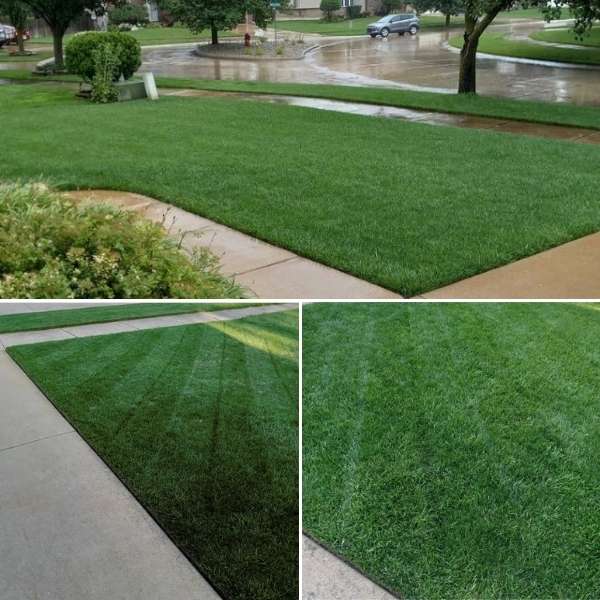

Un-chelated iron won’t break down to a liquid form. Another benefit to chelation is that it makes iron dissolvable in water, making it much easier to apply. Chelated liquid iron can be purchased as a concentrate, at a slightly higher price point, or in a cheaper granule or powder form.

As a result, you’ll see a greener lawn above ground because of happier roots underground. Types of Chelated Iron for LawnsĬhelated iron products work quickest in liquid form. Otherwise, you run the risk of an iron toxicity situation. It’s important to test the pH of your soil so you’ll know which would be the best liquid iron for your lawn, out of all the different types. Which allows it to turn sunlight into food. While maintaining the consistent level of accessible iron your lawn needs for chlorophyll development. The process of ‘chelating’ iron is intended to prevent this from happening. Making any nutrients they may have once offered your lawn completely inaccessible. When pure or untreated iron supplements are added to soil, they will eventually start to coagulate into a solid.
#Chelated liquid iron plus
HEDTA > effective in pH up to 6.0 plus broadleaf herbicideĮDDHA/EDDHMA > effective in pH up to 9.0 How Does a Chelated Iron Supplement Work? So, what’s the difference between the various types mentioned above? The effectiveness of each type will greatly depend on your soil’s pH level. Effectively combating this yellowing phenomenon often needs just one application. Referred to as ‘sequestered iron’ in the horticulture world, it’s become one of the most sought-after tonics for treating chlorosis in lawns. Is Chelated Iron a Fertilizer?Ĭhelated iron is a specially formulated fertilizer that allows for optimum nutrition absorption. When choosing which brand of chelated iron to use, you’ll see listings like Fe-DTPA, Fe-EDDHA, Fe-EDTA, Fe-EDDHMA, and Fe-HEDTA, all of which are common formulas in some of the best types of liquid iron for lawns. The chelating process also keeps iron from separating and leaching out, allowing it to remain where it is most accessible to the roots of your lawn. This prevents it from rusting in the soil. Iron in ‘chelated’ form is far more beneficial as it is processed using the addition of non-metallic ions that create a protective barrier between the iron in your soil and oxygen. But if rust content is allowed to build up over time, it may lead to iron toxicity in the soil. In small qualities, this wouldn’t harm your lawn. Iron in its pure form isn’t of much benefit to plants because it naturally rusts when exposed to water and oxygen. Thanks for your support! You can find out more here. Some links on this page may be affiliate links which means if you choose to make a purchase, I may earn a small commission at no extra cost to you. Here, we’ll discuss ways to improve the iron content in your lawn’s substrate for long-term vibrancy.īy the way, our site is supported by visitors like you. Simply spraying on iron may be a quick fix but it won’t last long. Without it, your sod will turn a faded yellowish color. Lawns can only make chlorophyll (which makes it green) with proper access to iron. If vital elements are lacking in your soil, then chelated liquid iron for lawns is invaluable. The soil hidden beneath should include all the elements needed for them to thrive. But, what about the soil? That all-important substrate, providing a fertile home for turf grasses to grow in. Maintaining it includes things like deep watering, mowing, and fertilizing with the focus being primarily on the grass itself. The allure of a healthy lawn is the lush, vibrant sea of green that increases the beauty and use of our outdoor spaces.

This is often the case with chelated iron. But, you’ve never considered it, not knowing what it is or how it works. Among the garden center shelves filled with a plethora of soil amendments and fertilizers, there sits one that sounds familiar.


 0 kommentar(er)
0 kommentar(er)
